Regarding vehicle wheel compatibility, bolt patterns ensure your wheels fit securely and safely.
These patterns, also known as lug patterns or Pitch Circle Diameter (PCD), define the number of lug holes and the diameter of the circle they form on your wheel.
Understanding bolt patterns is particularly important for Volkswagen Jetta owners due to the model’s evolution over generations.
While the MK4 Jetta features a 5x100mm pattern, later models transitioned to a 5x112mm configuration.
This comprehensive guide will explore everything you need to know about Jetta bolt patterns, including identifying your model’s specific pattern, essential measurement tools, compatibility with other vehicles, and proper maintenance techniques.
What Is a Volkswagen Jetta’s Bolt Pattern?
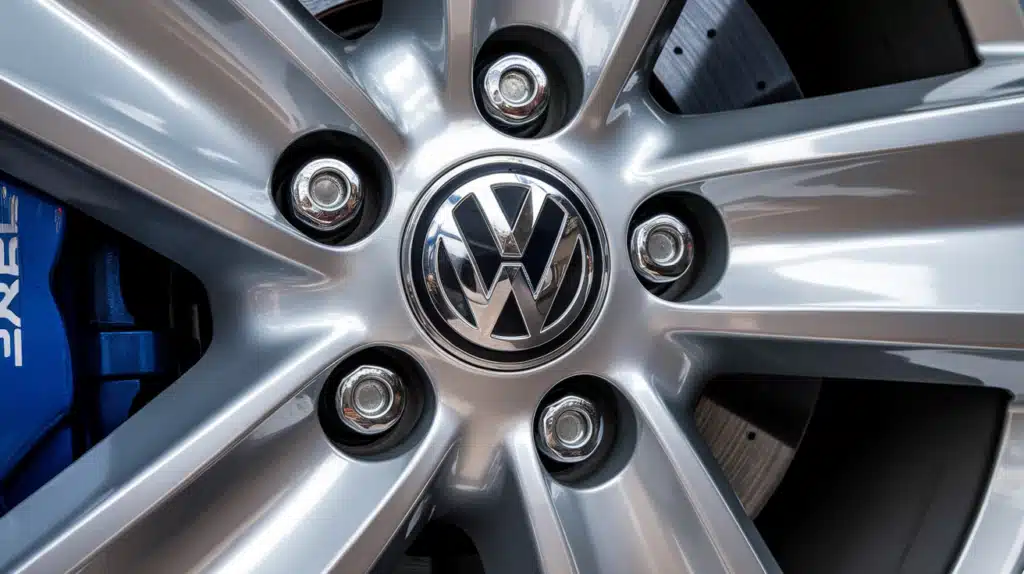
A bolt pattern, also known as a lug pattern or Pitch Circle Diameter (PCD), indicates the number of wheel lug holes and the diameter of the circle they form.
For Volkswagen Jettas, the bolt pattern varies by generation – the MK4 Jetta uses a 5x100mm pattern, while later models like the 2011 MK6 Jetta utilize a 5x112mm pattern.
The first number (5) represents the number of lug holes, while the second number (112 or 100) indicates the diameter in millimeters of the circle formed by the lug holes’ centers.
The correct bolt pattern is crucial for proper wheel fitment and safety, ensuring the wheel is securely mounted to the vehicle’s hub.
Using wheels with the wrong bolt pattern can lead to improper installation, wheel vibration, and potential safety hazards while driving.
Understanding Jetta Bolt Compatibility
Based on the provided text, the wheel compatibility for Volkswagen Jettas involves several crucial factors beyond matching the bolt pattern.
For proper fitment, the hub bore size must match – for example, Jettas typically use a 57.1mm center bore. The wheel offset (ET) also plays a critical role, with most Jetta applications ranging from ET20 to ET43 depending on wheel width and intended fitment style.
For OEM+ setups, wheels like the SM-10 in 17×8.5″ ET43 provide direct fitment, while more aggressive aftermarket setups like 18×9″ ET42 may require modifications such as the “fender screw mod” and additional camber adjustment.
When choosing between OEM and aftermarket wheels, it’s important to consider that OEM wheels typically offer conservative fitments focused on reliability. In contrast, aftermarket options allow for wider wheels and more aggressive styling, though they may require additional modifications for proper fitment.
Correct Bolt Patterns for Jetta Models
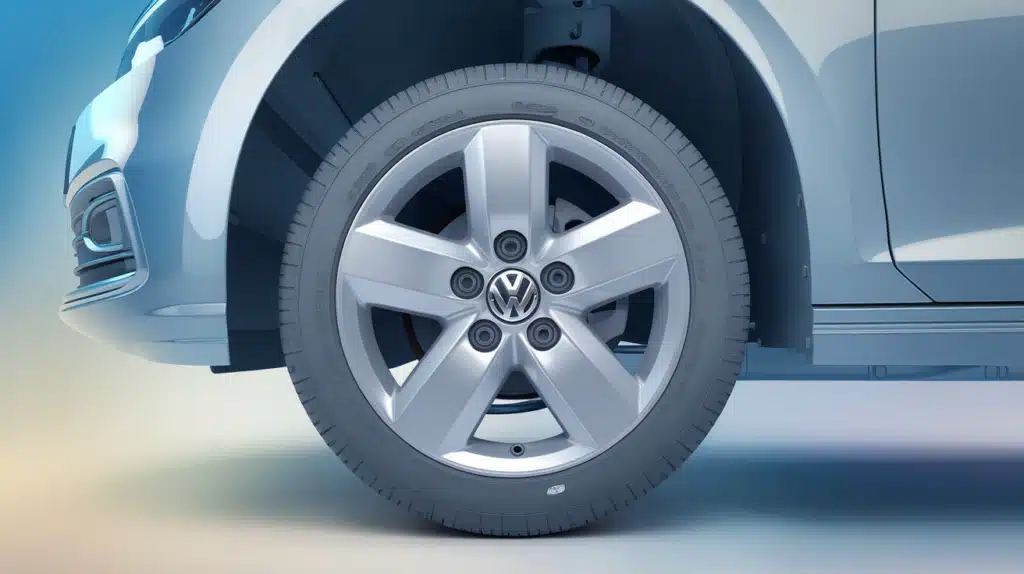
The MK4 Jetta (1999-2006) uses a 5x100mm bolt pattern across all trim levels. Moving to the MK5 Jetta (2005-2010), Volkswagen standardized the bolt pattern to 5x112mm, which continued into later generations.
For both street and track applications on the MK5 platform, this bolt pattern remains consistent whether using 17″, 18″, or 19″ wheels.
All three performance tiers (OEM+, Performance Street/Track, and Winter setups) maintain the same 5x112mm bolt pattern for aftermarket wheel fitment, though wheel widths and offsets may vary.
The text specifically details extensive fitment options for the MK5 platform, with wheel sizes ranging from 17×8.5″ to 19×9″, all maintaining the 5x112mm pattern regardless of the chosen performance category or wheel design (SM-10, VS-5RS, or ML-10RT).
Identifying Your Jetta’s Bolt Pattern
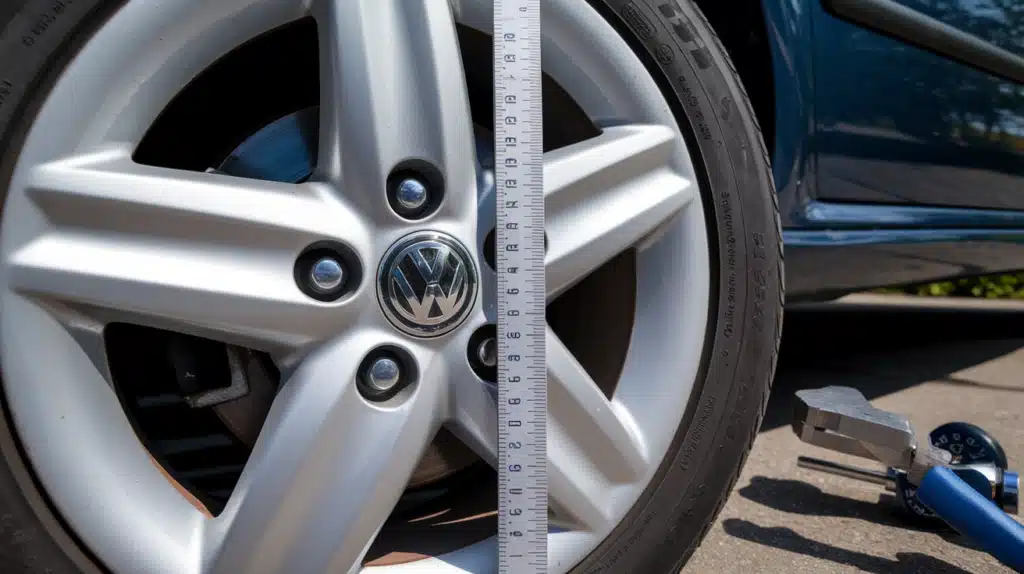
Determining your Volkswagen Jetta’s bolt pattern is crucial for proper wheel fitment. Most Jettas use a 5x100mm pattern (common on MK4) or a 5x112mm pattern (found on later models like MK5).
To measure your bolt pattern, count the number of lug holes (typically 5) and measure the distance between the centers of opposite lugs in millimeters.
For more precise measurement, locate the center of one lug hole and measure two positions away from the center of the lug hole.
You can also find this information in your owner’s manual or by checking the wheel specifications. Common mistakes include measuring edge-to-edge instead of center-to-center or confusing similar patterns like 5×100 and 5×112.
Always verify the bolt pattern and center bore size (57.1mm) to ensure proper wheel fitment.
Tools to Measure Jetta Bolt Pattern
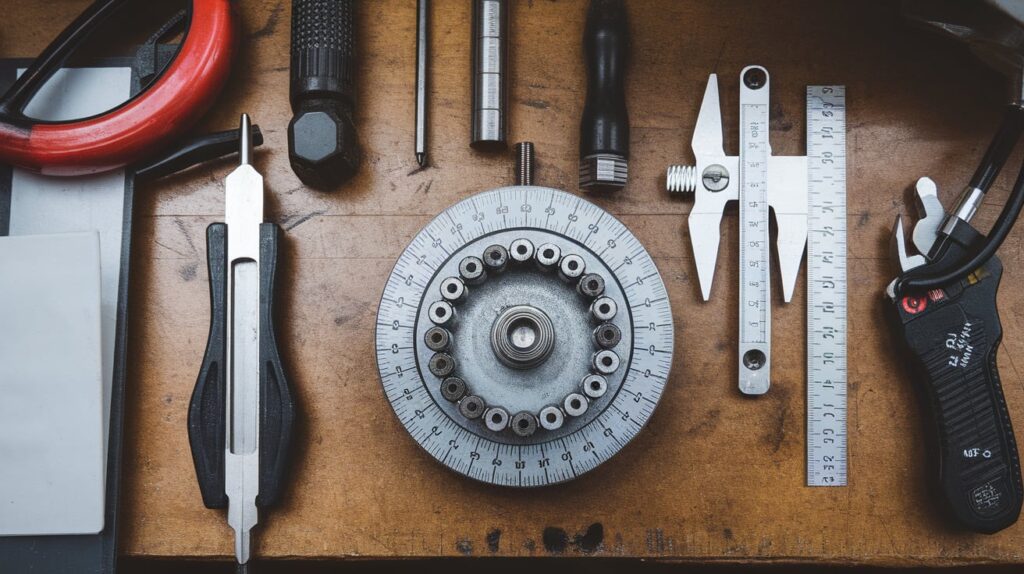
To accurately measure your Volkswagen Jetta’s bolt pattern, you’ll need specific tools that ensure precise measurements and help avoid costly fitment mistakes:
A digital caliper provides the most accurate measurements of bolt patterns, offering precise millimeter readings between lug holes. While professional-grade calipers can be expensive, affordable digital options starting around $30 work well for occasional use.
For easier measurements, a dedicated bolt pattern gauge (also called a PCD gauge) offers a foolproof way to determine your pattern. These specialized tools have pre-marked measurements and can quickly confirm whether you have a 5x100mm or 5x112mm pattern.
If you’re on a budget, a standard measuring tape or ruler can work, though it requires more care to ensure accuracy.
When using these basic tools, always measure from the center of one lug hole to the center of the opposite hole, not the edges.
Evolution of Jetta Bolt Patterns
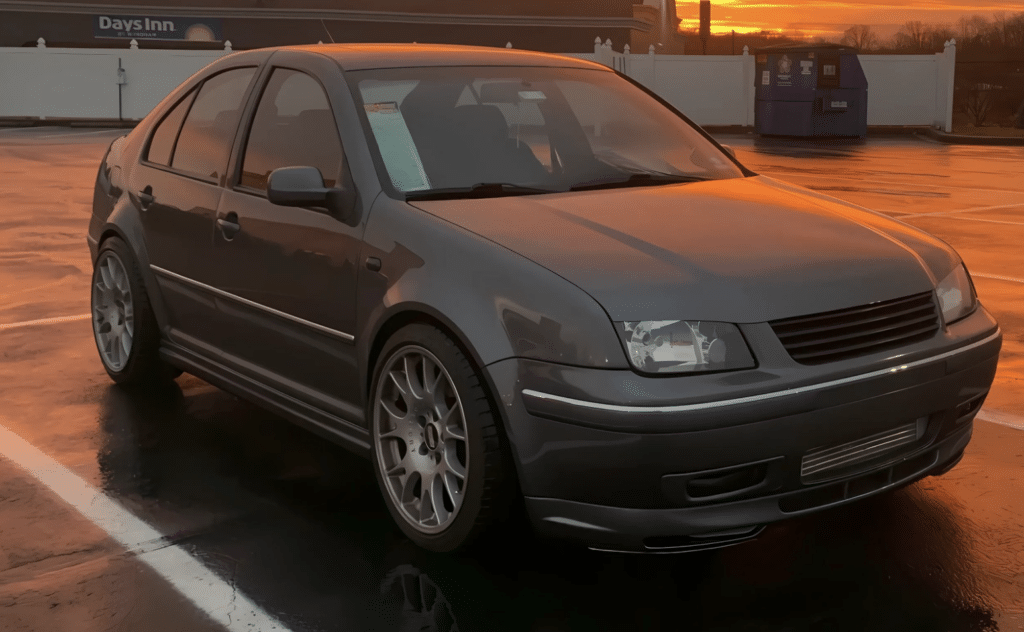
Based on the provided text and fitment data, the Volkswagen Jetta’s bolt pattern has seen significant changes across its generations, reflecting the car’s evolving platform :
The MK4 Jetta (1999-2006) utilized a 5x100mm bolt pattern, which became iconic among VW enthusiasts and was shared with many other Volkswagen Group vehicles of that era. This standardization made wheel swapping popular within the VW community.
A major change came with the MK5 generation (2005-2010), when Volkswagen switched to a 5x112mm bolt pattern.
This modification was part of Volkswagen’s platform standardization strategy, aligning the Jetta with Audi’s bolt pattern specifications. The 5x112mm pattern continued through later generations.
The shift to 5x112mm wasn’t just a technical change – it opened up more wheel options for Jetta owners, particularly in the performance and luxury segments. However, it made older VW wheels incompatible without adapters.
This evolution reflects Volkswagen’s broader move toward premium market positioning.
Jetta vs Competitors’ Bolt Patterns

The Volkswagen Jetta stands out with its 5x112mm bolt pattern (MK5+) and 5x100mm pattern (MK4), offering advantages and challenges compared to competitors.
Here’s What You Should Know:
- Honda and Toyota typically use 5×114.3mm patterns, making wheel sharing between brands challenging
- Ford compact sedans commonly use 5x108mm, creating limited cross-compatibility with Jetta wheels
- The Jetta’s European bolt pattern allows access to premium wheel brands like BBS and OZ Racing, though often at higher prices.
- Aftermarket wheels for Jettas typically cost 15-25% more than comparable Honda/Toyota fitments due to lower production volume.s
- Jettas’s 57.1mm hub bore is smaller than most competitors (64.1mm common on Japanese cars), requiring specific hub-centric rings for wheel fitment.
- This unique specification benefits owners by providing access to the entire VW/Audi wheel ecosystem, though at a premium price point.
Maintaining Jetta Bolt Pattern Alignment

Based on the technical documentation, proper maintenance of your Jetta’s bolt pattern integrity is crucial, starting with the 89 ft-lbs torque requirement and M14x1.5 bolt specifications.
Never exceed the factory-specified torque settings when installing wheels to prevent thread damage and hub distortion.
Always follow the star pattern when tightening lug bolts, moving diagonally across rather than in a circle to ensure even pressure distribution.
After the first 50 miles of driving, it’s essential to recheck torque settings as wheels can settle into position. Regular maintenance should include cleaning mounting surfaces and inspecting for corrosion, especially in winter.
Use only OEM-spec M14x1.5 lug bolts with the correct 28mm length to maintain proper thread engagement, and avoid using impact wrenches for final tightening – always finish with a calibrated torque wrench.
Inspect bolt holes for elongation or damage during tire rotations, which typically occur every 5,000-7,000 miles.
Any damaged lug bolts should be replaced immediately rather than risking compromised wheel security.
Conclusion
Understanding your Volkswagen Jetta’s bolt pattern is more than just a technical detail – it’s a crucial element of vehicle safety and performance.
Whether you own an MK4 with its 5x100mm pattern or a later model featuring the 5x112mm configuration, proper wheel fitment starts with matching these specifications exactly.
While aftermarket wheels offer exciting customization options, never compromise on compatibility. Taking the time to verify your bolt pattern, using the right tools for measurement, and maintaining proper torque specifications will save you from costly mistakes and potential safety hazards down the road.
By applying the knowledge shared in this guide, you’ll make informed decisions about wheel selection and maintenance, ensuring a smooth, safe ride while protecting your investment.
After all, the few minutes spent confirming proper fitment can save hours of frustration and hundreds of dollars in repairs.


